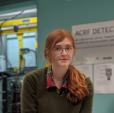

Showing 561 - 580 of 766 results


Role at ANSTO

Role at ANSTO

2022 Shorebirds Competition Summary and Results
Shorebirds Competition 2022 results.

Role at ANSTO
Frequently Asked Questions
Frequently asked questions about the ANSTO Security Process, travel funding, ANSTO Research Portal and ACNS Customer Portal.

Role at ANSTO

High-energy heavy ion microprobe
The high-energy heavy-ion microprobe is used for the characterisation or modification of material properties at depths from approximately 1 micrometre to maximum depths of up to 500 micrometres from the material surface.

STEAM Club Online
Learn. Create. Innovate

Dr Filomena Floriana Salvemini is an instrument scientist on the neutron imaging instrument DINGO.

Role at ANSTO

Role at ANSTO

Role at ANSTO

United Uranium Scholarship - Privacy Collection Notice
In accordance with the Trust Deed, the United Uranium Scholarship is awarded to ‘promising young scientists’ from any Australian organisation or institution whose research or work is in the field of nuclear energy.

Role at ANSTO

Dr Carol Azzam Mackay is the Design and Innovation Manager at nandin, ANSTO’s Innovation Centre.

Advanced Manufacturing

Mitigation and Optimisation of Radiation Responses
This program explores the mechanism and outcome of the interaction of radiation on biological systems in order to improve our understanding of the impact of radiation on the brain, optimise radiotherapy and develop mitigation strategies for space travellers.

